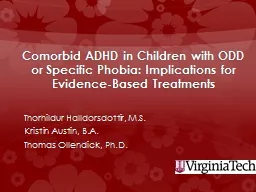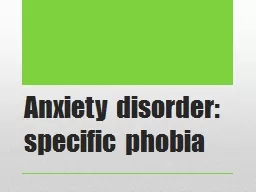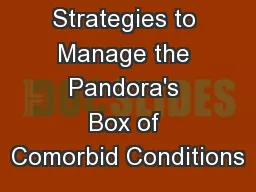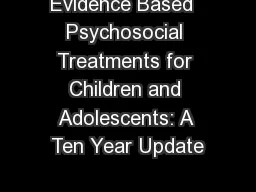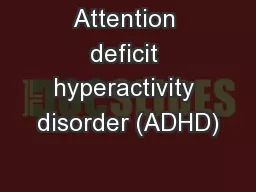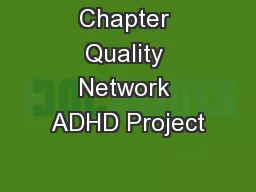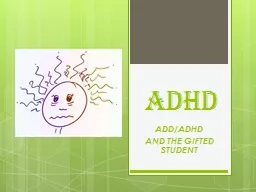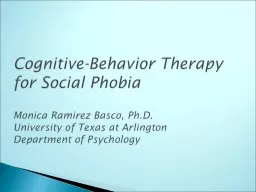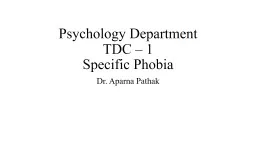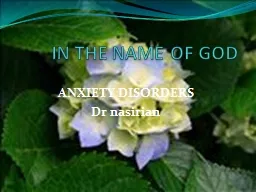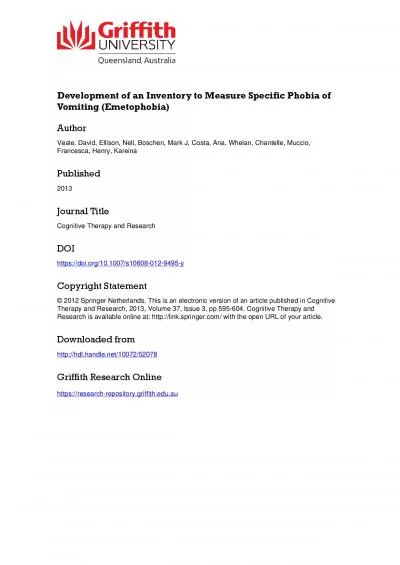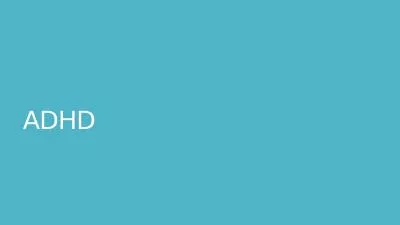PPT-Comorbid ADHD in Children with ODD or Specific Phobia: Implications for Evidence-Based
Author : min-jolicoeur | Published Date : 2018-12-09
Thorhildur Halldorsdottir MS Kristin Austin BA Thomas Ollendick PhD Overview ADHD ODD and Specific Phobia Treatment Studies and Comorbidity Present Studies
Presentation Embed Code
Download Presentation
Download Presentation The PPT/PDF document "Comorbid ADHD in Children with ODD or Sp..." is the property of its rightful owner. Permission is granted to download and print the materials on this website for personal, non-commercial use only, and to display it on your personal computer provided you do not modify the materials and that you retain all copyright notices contained in the materials. By downloading content from our website, you accept the terms of this agreement.
Comorbid ADHD in Children with ODD or Specific Phobia: Implications for Evidence-Based: Transcript
Download Rules Of Document
"Comorbid ADHD in Children with ODD or Specific Phobia: Implications for Evidence-Based"The content belongs to its owner. You may download and print it for personal use, without modification, and keep all copyright notices. By downloading, you agree to these terms.
Related Documents

